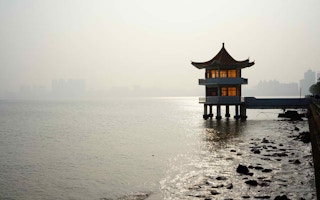On the road from coal to renewable energy, China has a complex challenge to face: it must satisfy rising energy demand while reducing carbon emissions and sustainably managing water use without hobbling the power and agriculture sectors or the overall economy.
Water stress adds to the challenge, because 66.5 per cent of China’s coal-fired power plants are in areas where water is scarce — 70 per cent of China’s coal is mined in six northwestern provinces with only 8 per cent of the country’s renewable freshwater — and where coal competes with agriculture for its share. The way China tackles the mismatch between water stress and power plants could offer help for other countries facing similar challenges.

Overall, China is one of the world’s most water-stressed countries, with the per capita water resources less than 30 per cent of the global average. Nearly one-third of China’s land area, supporting 678 million people, faces high or extremely high water stress, according to Aqueduct China, which uses Aqueduct’s framework alongside local data for a nuanced view of the country.

Driven by western China’s coal reserves and eastern China’s growing energy demand, China started the West-to-East Electricity Transmission Project to shift a large proportion of thermoelectric power generation to northwestern regions near coal mines, where water stress is high or extremely high.
The study shows that coal-fired power plants in areas under high or extremely high water stress increased from 58.5 per cent to 66.5 per cent of the national total power generation from 2000 to 2015. The shifting spatial distribution of coal power generation has led to significantly increased thermoelectric water stress in large coal power industrial clusters (see Figure 3).
Western China is also an important agricultural region that includes major food-producing provinces such as Inner Mongolia and Xinjiang. That means western regions under high water stress have faced more intensive competition for water from the growing power industry.

Economic development will increase power demand, and climate change will continue to create uncertainties about rainfall, water supply and social and economic conditions. Coal-fired power plants that rely on freshwater for cooling will become more vulnerable in water-stressed areas.
“
Water stress adds to the challenge, because 66.5 per cent of China’s coal-fired power plants are in areas where water is scarce.
Addressing the water-power challenge
Here’s how China is addressing this complex challenge:
- Renewable energy. This is the key to China’s transition to a low-carbon, high-quality economy.
Renewable sources can meet the demand for electricity while offering environmental benefits. In 2017, China invested $126.6 billion in renewable energy, nearly half of the world total and more than higher than the United States ($40.5 billion). More than two-thirds of this investment was in solar PV, which now provides power to more than homes; the rest was in wind.
From 2010 to 2018, the total installed capacity of solar PV and wind power in China increased. China also sets an and promotes the development of energy storage technology. WRI research on energy storage technology in China aims to help promote renewable energy development.
For new and existing coal-fired power plants, China also adopted measures such as upgrading cooling systems, and improving water resources management.
- Advanced cooling technologies. In 2004, after gradually recognizing the constraint water scarcity may impose on power generation, China’s National Development and Reform Commission required new coal-fired power plants built in water-scarce regions in northern and northwestern regions to adopt air-cooling technology, which can save nearly 80 per cent of water withdrawal compared to traditional recirculating cooling technology. Nationally, between 2000 and 2015, freshwater withdrawal and consumption have been decoupled from thermoelectric power generation growth, largely due to the changing structure of cooling technologies.
- Water resources management. To promote sustainable water resources management and reasonable water allocations, China has started to implement the strictest water resources management. For the coal sector, the government has introduced regulations and guidance at the national and provincial levels, including implementing more stringent water withdrawal quotas for coal power plants according to their generation capacity and cooling system type in 2012, mandatory requirements on water resources assessment reports for coal-fired power projects in 2013. In 2019, the MWR has further set a cap on water use by coal plants, which is estimated to increase the water use efficiency of relevant companies by 10 per cent - 20 per cent. The 13th Five Year Plan for coal industry development also emphasised controlling development of coal-fired plants in regions with limited water and fragile environments. These policies have strengthened the effort to conserve water. The coal-fired power industry has become one of key water-saving promotion industries in China.
Water stress remains a regional challenge for China. The power sector needs to keep focused on renewable energy, as well as enhance the integrated management of water, energy and infrastructure.
Hui Zeng is a research assistant and Xiaotian Fu is an associate at the World Resources Institute. This article was originally published on the WRI blog.












